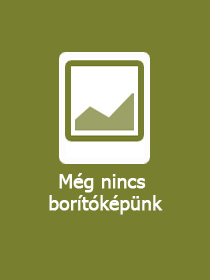
A termék adatai:
| ISBN13: | 9780198947905 |
| ISBN10: | 0198947909 |
| Kötéstípus: | Keménykötés |
| Terjedelem: | 320 oldal |
| Méret: | 246x189 mm |
| Nyelv: | angol |
| 700 |
Témakör:
Figuring Death in Classical Athens
Visual and Literary Explorations
Sorozatcím:
Visual Conversations in Art and Archaeology Series;
Kiadó: OUP Oxford
Megjelenés dátuma: 2025. március 6.
Normál ár:
Kiadói listaár:
GBP 88.00
GBP 88.00
Az Ön ára:
41 580 (39 600 Ft + 5% áfa )
Kedvezmény(ek): 10% (kb. 4 620 Ft)
A kedvezmény csak az 'Értesítés a kedvenc témákról' hírlevelünk címzettjeinek rendeléseire érvényes.
Kattintson ide a feliratkozáshoz
Kattintson ide a feliratkozáshoz
Beszerezhetőség:
Még nem jelent meg, de rendelhető. A megjelenéstől számított néhány héten belül megérkezik.
Rövid leírás:
Figuring Death in Classical Athens puts art and literature in conversation to explore how ancient Athenians grappled with the uncertainties of death. How did objects and texts generate thinking about what death is and might be like?
Hosszú leírás:
Figuring Death in Classical Athens puts art and literature in conversation to explore how ancient Athenians grappled with the uncertainties of death. How did objects and texts generate thinking about what death is and might be like? Were Athenians aware of the imaginative frameworks that underpinned their thinking? Did they worry not just about death, but whether they could figure it out?
Death in the ancient world has long been a subject of interest. Studies abound that examine its social and ideological dimensions, funerary practices, and changing attitudes and beliefs. This book takes a fresh approach, cutting across sub-disciplines (art, text, philosophy, and so on) to build a picture of how ancient art and literature got their audiences thinking-thinking not just about death but about its knowability. Whether in the theatre, at the symposium, or on the Acropolis, representations of death challenged Athenians by presenting problems of exteriority (how can the living know what dying might be like?) and particularity (can one person's experience hold for another? is death truly a 'leveller'?).
The material covered is wide ranging. Unlike other studies, which often focus on either art or text and on one category of objects or one literary genre, the book pulls together exemplary texts and objects (including Plato, drinking cups, Sophocles, temple sculpture, and Thucydides) and makes each accessible to readers from multiple sub-disciplines and, indeed, from beyond Classics.
It will be critical reading for those interested in ancient attitudes to death, as well as those interested in cultural imagination and intellectual history. As a multi-media study, it will appeal to those working on ancient image and text (and their intersection), and, more broadly, to those in other disciplines working on visuality, mediality, materiality, and culturally situated ideas.
Death in the ancient world has long been a subject of interest. Studies abound that examine its social and ideological dimensions, funerary practices, and changing attitudes and beliefs. This book takes a fresh approach, cutting across sub-disciplines (art, text, philosophy, and so on) to build a picture of how ancient art and literature got their audiences thinking-thinking not just about death but about its knowability. Whether in the theatre, at the symposium, or on the Acropolis, representations of death challenged Athenians by presenting problems of exteriority (how can the living know what dying might be like?) and particularity (can one person's experience hold for another? is death truly a 'leveller'?).
The material covered is wide ranging. Unlike other studies, which often focus on either art or text and on one category of objects or one literary genre, the book pulls together exemplary texts and objects (including Plato, drinking cups, Sophocles, temple sculpture, and Thucydides) and makes each accessible to readers from multiple sub-disciplines and, indeed, from beyond Classics.
It will be critical reading for those interested in ancient attitudes to death, as well as those interested in cultural imagination and intellectual history. As a multi-media study, it will appeal to those working on ancient image and text (and their intersection), and, more broadly, to those in other disciplines working on visuality, mediality, materiality, and culturally situated ideas.
Tartalomjegyzék:
Figuring Death in Classical Athens: Visual and Literary Explorations
Death Comes as the End: Encountering Death in Plato's Phaedo
They Do It with Mirrors?: Imagining Death with Painted Pots
Deaths Old and New
The Extraordinary Death of Sophocles' Oedipus at Colonus
Niobes
Victory, Victory, Victory?: Encountering Death in the West Frieze of the Temple of Athena Nike
Death and the Plague in Thucydides' History of the Peloponnesian War
Figuring (Out) Death
Death Comes as the End: Encountering Death in Plato's Phaedo
They Do It with Mirrors?: Imagining Death with Painted Pots
Deaths Old and New
The Extraordinary Death of Sophocles' Oedipus at Colonus
Niobes
Victory, Victory, Victory?: Encountering Death in the West Frieze of the Temple of Athena Nike
Death and the Plague in Thucydides' History of the Peloponnesian War
Figuring (Out) Death

